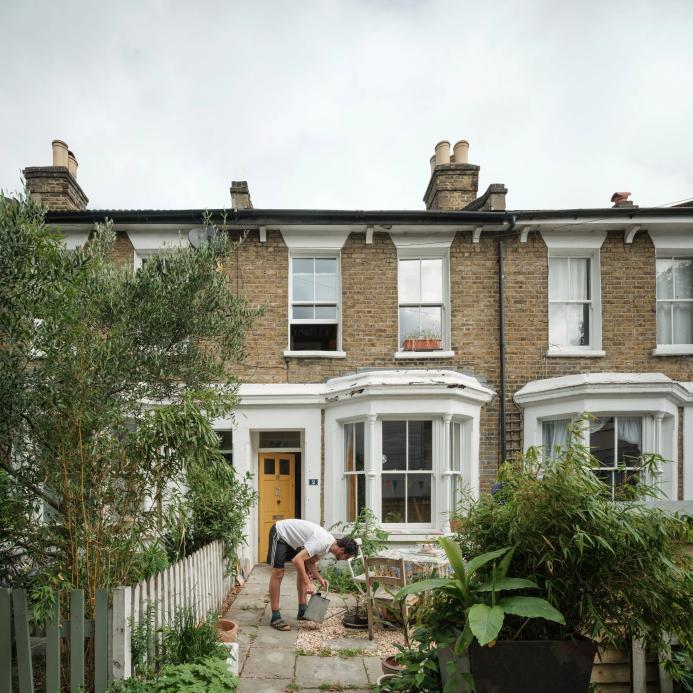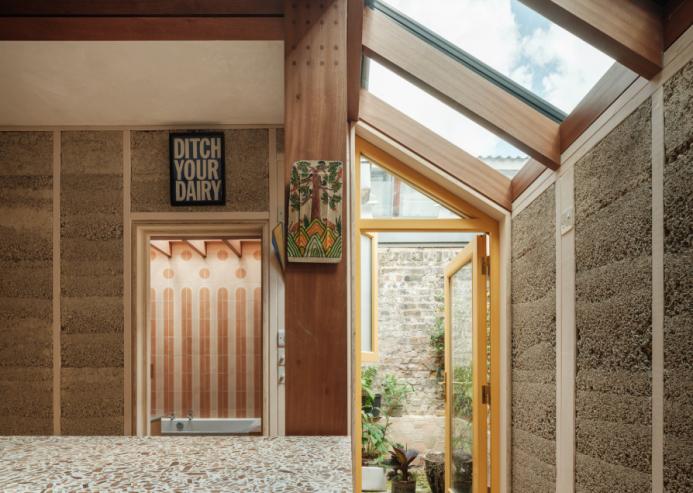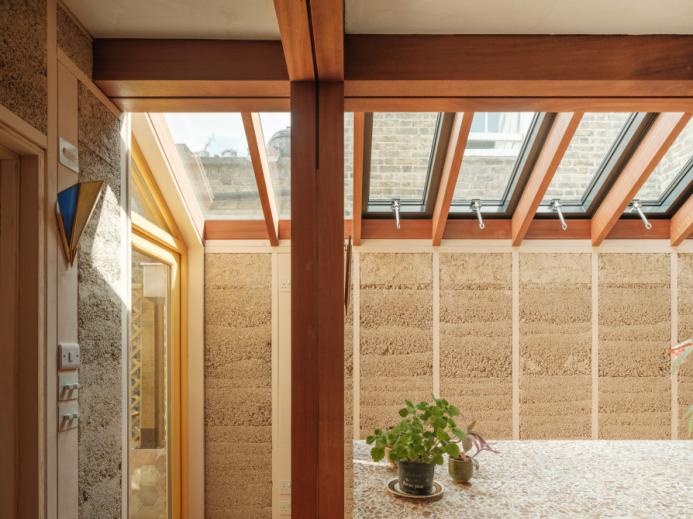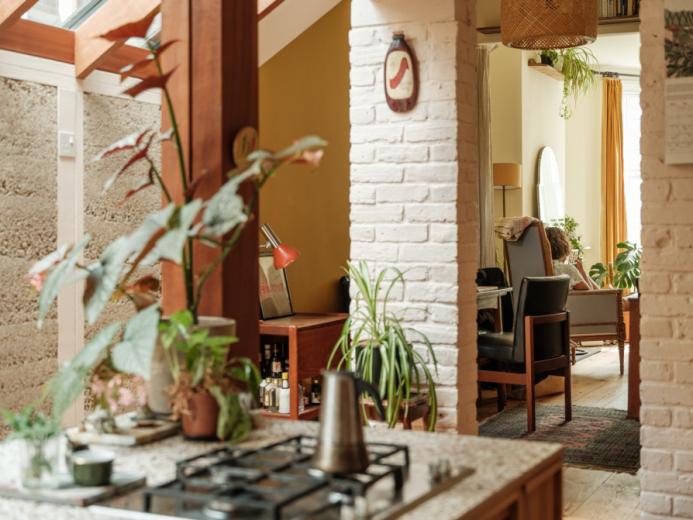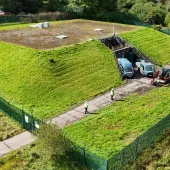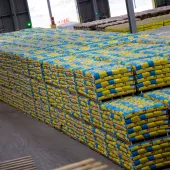Cairn use hand-poured hempcrete for London house
Architecture studio Cairn have transformed a Victorian home in Victoria Park Village, London, into a beacon of eco-conscious design.
Aptly named "House Made by Many Hands", the project showcases a harmonious blend of traditional aesthetics and cutting-edge materials, setting a new standard for low-impact urban living.
Cairn's redesign of the once "dark and cramped" house integrates innovative techniques and locally sourced materials, resulting in an inviting and “environmentally responsible” space.
The extensive renovation, spanning from 2021 to 2023, aimed to reduce the home's carbon footprint while enhancing its functionality and aesthetic appeal.
Central to the transformation is the use of hand-poured hempcrete, a bio-composite material crafted from hemp and lime, which forms the textured walls of the extension. A sustainable alternative to conventional building materials, it reduces the project’s environmental impact and adds a distinctive character to the home's interior.
Cairn's use of limestone calcined clay cement (LC3) concrete for the floor slab underscores their commitment to innovation. This low-carbon cement, a first of its kind in the UK, exemplifies the project's dedication to pushing the boundaries of sustainable construction practices.
"The project is a prototype for how a Victorian house can be renovated and extended with approaches that have a far lower environmental impact than traditional methods," explains Kieran Hawkins, founding director of Cairn.
At the heart of the renovation, there is a spacious kitchen, tailored to the needs of the client, who is a chef. Natural light floods the space, courtesy of strategically placed skylights, while internal doors have been removed to enhance the sense of openness and connectivity with the outdoors.
The collaborative nature of the project shines through in every detail, with the clients actively participating in the hand-casting of hempcrete walls. This communal approach fosters a sense of ownership and underscores the project's emphasis on human-centric design.
House Made by Many Hands has garnered acclaim for its innovative approach, winning the prestigious Environmental Leadership Prize at the NLA Don't Move Improve Awards 2024.
What is hempcrete?
Hempcrete is a bio-composite material made from the inner woody fibers of the hemp plant, lime, and water. It's a lightweight, breathable, and environmentally friendly material that is gaining popularity as a sustainable alternative to traditional construction materials like concrete.
The process of making hempcrete involves mixing the hemp hurds (the woody inner core of the hemp plant) with lime and water to create a slurry-like mixture. This mixture is then packed into molds or used as an infill between structural framing members.
Over time, the lime in the mixture undergoes a process called carbonation, where it absorbs carbon dioxide from the air and becomes solid, binding the hemp fibers together and forming a durable and insulating material. Hempcrete offers several benefits, including excellent thermal performance, moisture regulation, fire resistance, and carbon sequestration.
It's also renewable, biodegradable, and non-toxic, making it an attractive option for eco-conscious builders and homeowners.
However, hempcrete is not as strong as traditional concrete and is primarily used in non-load-bearing applications such as insulation, wall panels, and partitions.

